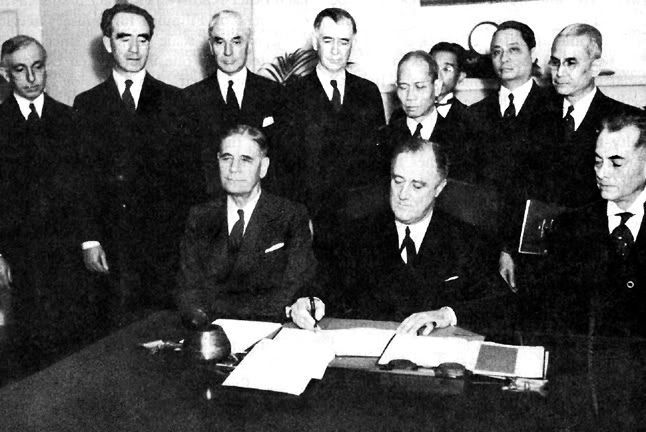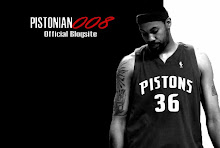
The Commonwealth of the Philippines was the political designation of the Philippines from 1935 to 1946 when the country was a commonwealth with the United States. Before 1935, the Philippines was an insular area with non-commonwealth status, and before that, it had been a U.S. territory.
The creation of the Commonwealth was envisioned under the Philippine Independence Act, popularly known as the Tydings-McDuffie Act as a ten-year transitional government in preparation for full Philippine independence and sovereignty, which was promised through the Philippine Autonomy Act or Jones Law.
It marked the end of the colonial eras as well as the transition of the nomenclature of the Philippines from the plural "Las Islas Filipinas" and "Philippine Islands" of the Spanish and American colonial periods, to the singular, "Philippines", which is a sign of unity, sovereignty, and national identity.
The Commonwealth had its own constitution, which remained effective until 1973, and was self-governing although foreign policy and military affairs would be under the responsibility of the United States, and certain legislation required the approval of the American president.
It featured a very strong executive, a unicameral National Assembly, and a Supreme Court,[11] all composed entirely of Filipinos, as well as an elected Resident Commissioner to the United States House of Representatives (as Puerto Rico does today). An American High Commissioner and an American Military Advisor, were also present in the government while a Field Marshall was in charge of the Philippine Army.
In 1939-40, after an amendment in the Constitution, a bicameral Congress, consisting a of Senate, and of a House of Representatives, was restored replacing the National Assembly.
The History
In December 1932, the United States Congress passed the Hare-Hawes-Cutting Act with the premise of granting Filipinos independence. Provisions of the bill included reserving several military and naval bases for the United States, as well as imposing tariffs and quotas on Philippine exports.[14][1] It was vetoed by President Herbert Hoover but the American Congress overrode his veto in 1933 and passed the bill. The bill, however, was opposed by the then Philippine Senate President Manuel L. Quezon and was also rejected by the Philippine Senate.
This led to the creation and passing of a new bill known as Tydings-McDuffie Act, which allowed the establishment of the Commonwealth of the Philippines with a ten-year period of peaceful transition to full independence.
Pre-War
In October 1935, presidential elections were held and candidates included former president Emilio Aguinaldo and Iglesia Filipina Indepediente leader Gregorio Aglipay. Manuel L. Quezon and Sergio Osmeña of the Nacionalista Party were proclaimed winners, winning the seats of president and vice-president, respectively.
The new government embarked on ambitious nation-building policies in preparation for economic and political independence. These included national defense (such as the National Defense Act of 1935, which organized a draft service in the country), greater control over the economy, the perfection of democratic institutions, reforms in education, improvement of transport, the promotion of local capital and industrialization, and the colonization of Mindanao.
However, uncertainties, especially in the diplomatic and military situation in Southeast Asia, in the level of U.S. commitment to the future Republic, and in the economy due to the Great Depression, proved to be major problems. The situation was further complicated by the presence of agrarian unrest, and of power struggles between Osmeña and Quezon, especially after Quezon was permitted to be reelected after a six-year term.
A proper evaluation of the policies' effectiveness or failure is difficult due to Japanese invasion during World War II.
World War II
Main article: Military history of the Philippines during World War II
Main article: Japanese Occupation of the Philippines
Japan launched a surprise attack on the Philippines on December 8, 1941. The Commonwealth government drafted the Philippine Army into the U.S. Army Forces Far East, which would resist Japanese occupation. Manila was declared an open city to prevent its destruction[16] and was occupied by the Japanese on January 2, 1942. Meanwhile, battles against the Japanese continued in Bataan, Corregidor, and Leyte until the final surrender of United States-Philippine forces on May 1942.
Quezon and Osmeña were escorted by troops to Corregidor and later left for the United States. There, they set up a government in exile, which participated in the Pacific War Council as well as the Declaration by United Nations. During exile, Quezon became ill with tuberculosis, and eventually died. Osmeña later replaced him as president.
Meanwhile, the Japanese military organized a new government in the Philippines known as the Second Philippine Republic, which was headed by President José P. Laurel. This government ended up being unpopular.
The resistance continued in the Philippines. This included the Hukbalahap ("People's Army Against the Japanese"), which consisted of 30,000 armed people and controlled much of Central Luzon. Remnants of the Philippine Army also fought the Japanese through guerrilla warfare and were successful since all but twelve of the forty-eight provinces were liberated.
MacArthur's Allied forces landed on Leyte on October 20, 1944 and were welcomed as liberators, as other landings followed. Fighting continued until Japan's formal surrender on September 2, 1945. Estimates for Filipino casualties reached one million, and Manila was extensively damaged .
After the war, the Commonwealth was restored and a one-year transitional period in preparation for independence began. Elections followed in April 1946 with Manuel Roxas winning as the first president of the independent Republic of the Philippines and Elpidio Quirino winning as vice-president.
Independence
Main article: Filipino-American Friendship Day
The Commonwealth ended when the United States recognized Philippine independence on July 4, 1946, as scheduled. However, the economy remained dependent to the U.S.. This was due to the Bell Trade Act, otherwise known as the Philippine Trade Act, which was a precondition for receiving war rehabilitation grants from the United States.







No comments:
Post a Comment